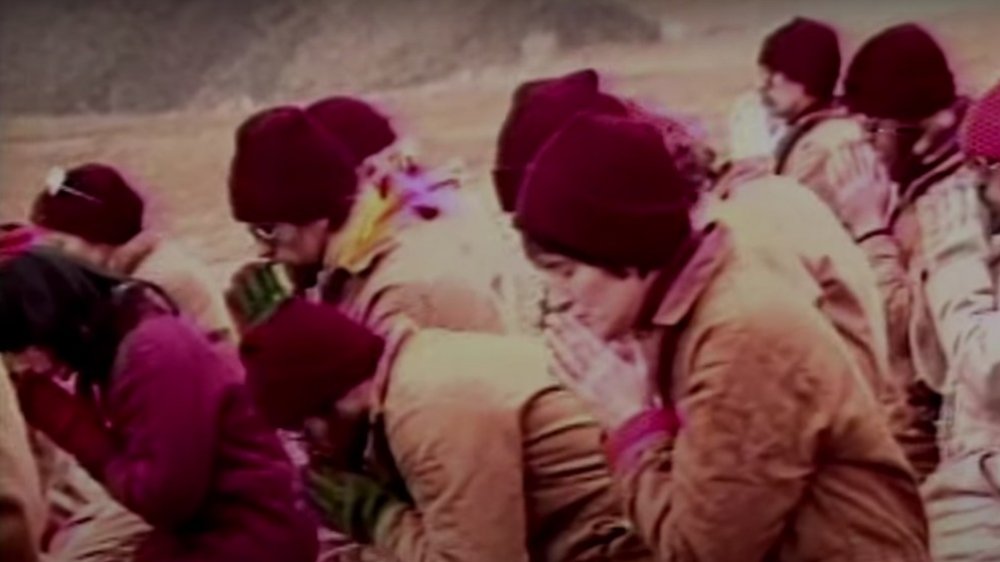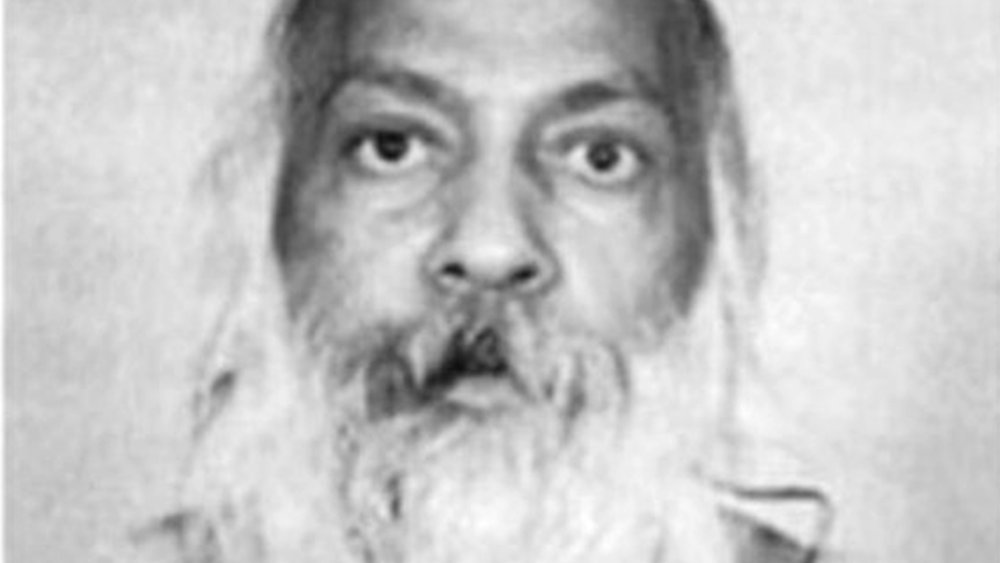The Strange History Of Antelope, Oregon
What constitutes a ghost town? In the case of Antelope, Oregon, it means just a few folks inhabit what was once populated, if not thriving. Antelope got its start in the 1870s, a supply source for nearby mines. It got its own post office in 1871, states the Ghost Town Gallery, and even today is only sparsely inhabited — World Population Review reported in 2018 that less than 50 people still reside there, in a town that measures less than a square mile, "deep in cattle country." (For reference, it's west and a little south of the town of Fossil.) But it wasn't always so — and we aren't talking about a Wild West boom town in the 1880s. We're talking about the 1980s, and the cult that set up camp not far from town.
There were thousands of them, the followers of the Bhagwan Shree Rajneesh, reports Oregon Live, ostensibly flocking to the high desert of Eastern Oregon to create a communal utopia. They would live, work, and frolic as one, taught by a spiritual leader from India variously described as a sage and as a cult leader.
The tiny town of Antelope, Oregon, was inundated by the Bhagwan's followers
The Daily Beast reports that the group traveled to the Pacific Northwest in 1981 "having run afoul of Indian authorities." A 60,000-acre ranch was purchased and construction began: residences, a dam, an airport, a garage for the Bhagwan's fleet of 19 Rolls Royces.
"Cult" is a harsh word that's applied liberally whenever the Bhagwan and his followers come up. As The Verge reports, "Rajneesh preached to his followers about the idea of creating awakened people who live in harmony with their surroundings. But his cult also forced members to donate large quantities of money, while creating an isolated community that kept tight control over its members." There were forced sterilizations and forced abortions. Politically, the commune overpowered the local residents, voting Antelope to be renamed Rajneeshpuram. (The Postal Service never accepted the change, says Photograph Oregon.)
How did it happen? Dr. Louis Manza, professor of psychology at Lebanon Valley College in Annville, Pennsylvania, told The Verge, "I think wanting to control is a driving force from the leader, and wanting to belong is the driving force for the member. You put those things together, you create the perfect storm for getting people into a cult." Observers, and survivors, all use that word — cult — for what happened at Antelope.
The mug shot: The Bhagwan took a plea bargain and was deported
Within about three years, it all fell apart. The Bhagwan was deported after a plea bargain on immigration charges; his second-in-command went to prison for attempted murder, convicted of trying to poison the population of The Dalles, another Eastern Oregon city, with salmonella, to gain political control. The commune collapsed and the members largely departed. Part of the complex has been repurposed into a Christian youth camp. The town held another election and voted to return to the name Antelope. In 2018, Antelope's mayor, John Silvertooth, told Fox 12 TV, "It's one of the most bizarre things, and it came to an abrupt screeching end. People were so glad to have it over with."
Except it wasn't; 2018 was the year the six-part documentary series Wild Wild Country debuted on Netflix, telling at least part of the story of Antelope and the Bhagwan. Even today, tourists occasionally show up, wanting to see what remains of a bit of Oregon history. As for the Bhagwan himself: After returning to India, he died of heart failure in 1990, age 58, says Biography.


